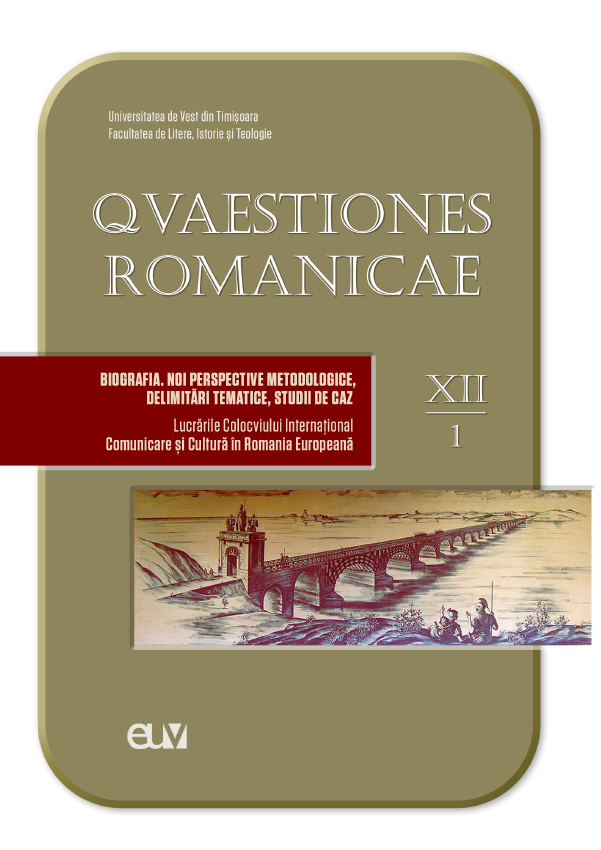Colette între eul empiric și eul fictiv. Studiu de caz: romanul Hoinara
Abstract: (Colette Between the Empirical Self and the Fictional Self. Case Study: The Vagabond Novel) Sidonie-Gabrielle Colette is one of the writers whose works are deeply influenced by her biography. One of her novels incorporating biographical elements is The Vagabond, translated into Romanian in 1969 as Hoinara by Ovidiu Constantinescu. In this article, we will examine the biographical elements identified in Hoinara to highlight the parallels between the author’s biography and the life of the protagonist, Renée Néré, an avatar of her own existence. In other words, the text addresses the problem of the "I" by presenting its fictional counterpart. Colette illustrates the inherent connection between the biographical self and the fictional self, a duality present in most of her works, which serves to emphasize the multiplicity of voices within a single individual. This technique of bringing the inner voice to life through the characters she created gives rise to two complementary worlds – one that explores the mystery of the human soul and the other that embodies literary creation. We will observe that in Colette's works, the female characters are not reduced to a mere collection of traits, but are depicted as complex beings, with full biographies behind them. Renée Néré’s austerity and the sequence of events ultimately shape a form of biographism exploited for aesthetic purposes.Consequently, through a simple yet profound narrative, in which the inner monologue serves as the primary tool for (self)knowledge, the framework of an existence is outlined. Through the protagonist's analepsis, the background is established, revealing the intersection of truth and fiction.
Keywords: Colette, The Vagabond, Renée Néré, doubling, biographism.
Rezumat: Sidonie-Gabrielle Colette este una din scriitoarele ale cărei texte sunt profund influențate de biografie. Un roman în care se remarcă existența nucleului subiectiv este La vagabonde, tradus în limba română, în 1969, cu titlul Hoinara, de către Ovidiu Constantinescu. În acest articol, vom urmări accentele biograficului, identificate în romanul Hoinara, pentru a reda interferențele existente între viața autoarei și parcursul protagonistei Renée Néré, avatarul său. Altfel spus, textul vizează problematica „eului”, prin redarea dublului său ficțional. Colette ilustrează inerența eu biografic – eu ficțional, recognoscibilă în majoritatea textelor sale. Această tehnică de a da naștere vocii interioare prin personajele pe care le-a creat asigură existența a două lumi complementare – cea a misterului ființei umane și cea a creației literare. Vom observa că, la Colette, personajele feminine nu sunt reduse la conglomerarea câtorva trăsături, ci reprezintă entități complexe, în spatele cărora transpare o întreagă biografie. Austeritatea lui Renée Néré și înlănțuirea evenimentelor determină, în fond, împărtășirea unui biografism exploatat în scop estetic. În consecință, printr-un discurs simplu, dar de o mare profunzime, în care este cultivat monologul interior ca principal instrument de (auto)cunoaștere este trasat eșafodajul unei existențe. Grație analepselor protagonistei, se conturează backgroundul în care se remarcă intersecția dintre adevăr și ficțiune.
Cuvinte-cheie: Colette, Hoinara, Renée Néré, dedublare, biografism.
